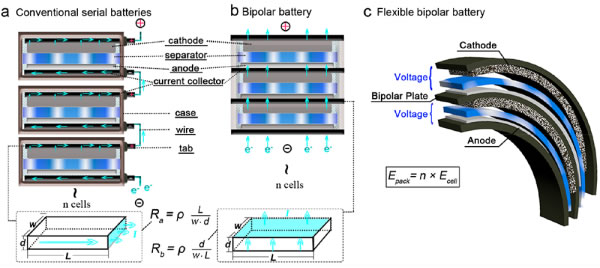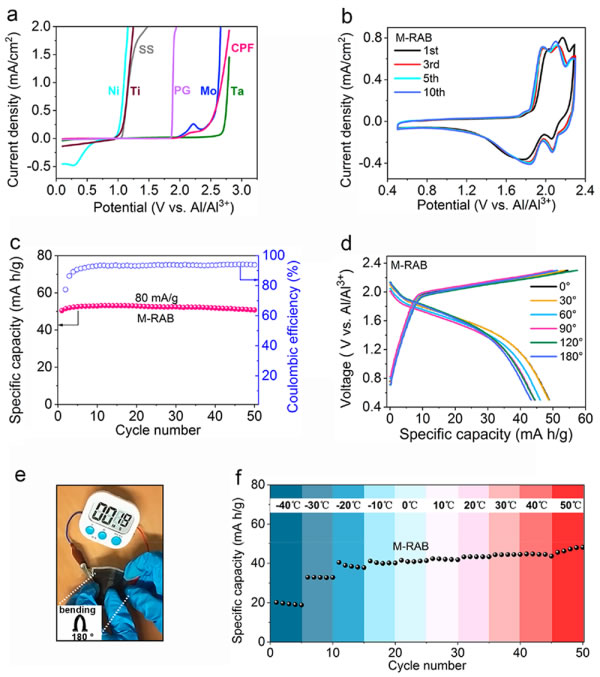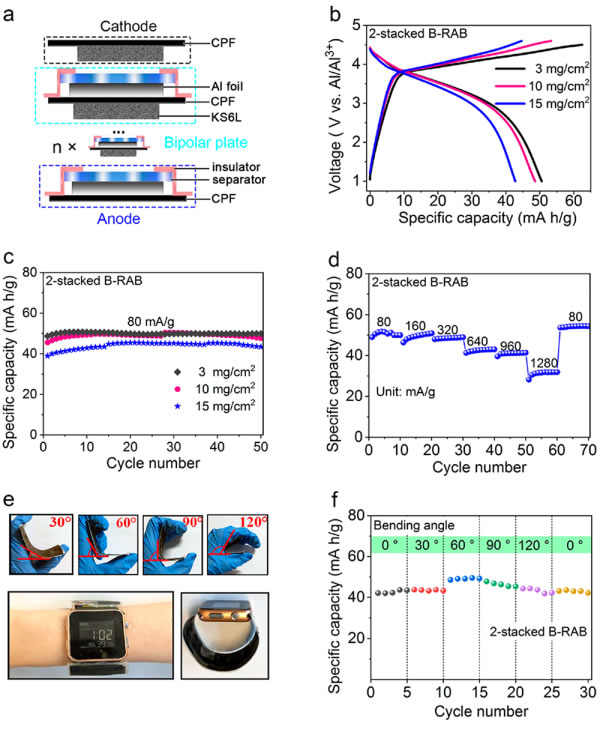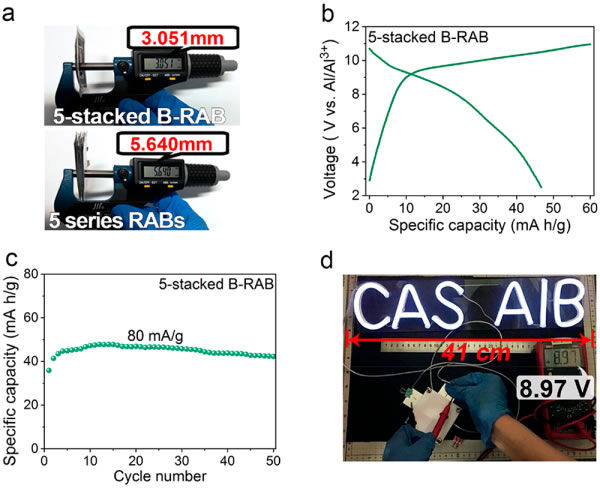The vigorous development of wearable electronic devices and flexible screens has driven continuous research on advanced flexible energy storage devices. In order to meet the dual requirements of flexibility and portability, flexible batteries need to have good flexibility, high energy density, and good safety performance in the selection of electrode materials and battery structure design. At present, most of the research on flexible batteries is mainly directed to the development of flexible materials and components. The overall structure of the battery still follows the traditional unipolar design, and in order to maintain the overall flexibility, conductivity and connectivity of the battery, a lot of extra Active components cause the battery energy density to be greatly reduced. In view of this, it is particularly important to carry out innovative design on the battery structure according to the application characteristics of the wearable battery.
Recently, researchers from the E01 group of the Clean Energy Laboratory, Institute of Physics, Chinese Academy of Sciences/Beijing National Research Center for Condensed Matter Physics designed an integrated bipolar structure for flexible batteries in response to the above problems and applied them to rechargeable aluminum batteries (Figure 1), the design fully combines the flexibility of the carbon/polyethylene film with the advantages of low internal resistance and high energy density of the bipolar structure, and has good corrosion resistance and easy operation (Figure 2). It has good electrochemical stability and flexibility (0°~120°), and can be directly made into a watchband to supply power for 4V commercial electronic watches (Figure 3). In addition, the structural design can be assembled into a 10V bipolar rechargeable aluminum battery, which can continuously supply power to a 9V LED lamp with a commercial operating voltage, and its volume is only 54% of the traditional unipolar batteries connected in series (Figure 4). Provides new ideas for the development of high energy density flexible batteries.
The research results were published in ACS Materials Letters under the title of Wearable Bipolar Rechargeable Aluminum Battery. Related work has been supported by the National Key Research and Development Program (2018YFB0104400), the National Natural Science Foundation of China (51872322), and Shell (PT76419).

Figure 1 Schematic diagram of a wearable bipolar battery

Figure 2 Electrochemical performance of single-layer rechargeable aluminum battery with carbon/polyethylene film

Figure 3 4V bipolar rechargeable aluminum battery electrochemical performance

Figure 4 10V bipolar rechargeable aluminum battery electrochemical performance
Changzhou Longfu Knitting Co., Ltd. , https://www.nbcircularmachine.com